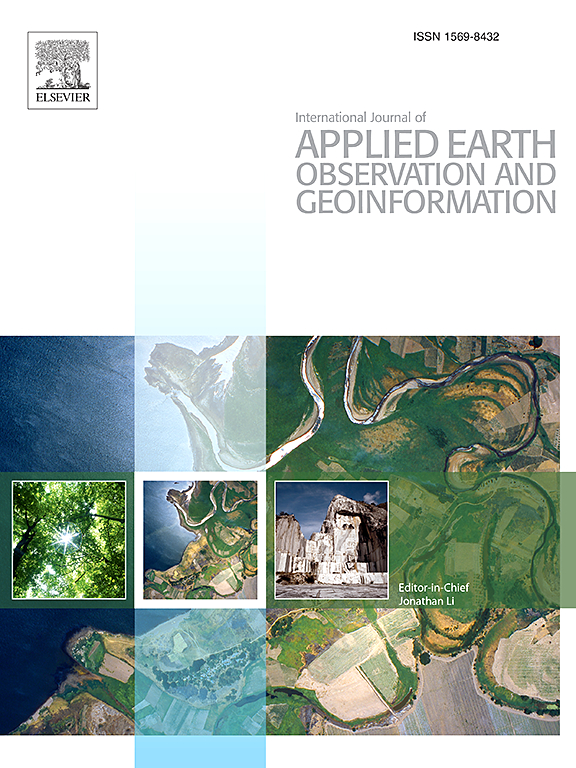基于非均匀激光雷达和RGB-D相机深度信息的无监督深度完井
IF 7.6
Q1 REMOTE SENSING
International journal of applied earth observation and geoinformation : ITC journal
Pub Date : 2025-02-01
DOI:10.1016/j.jag.2024.104327
引用次数: 0
摘要
在这项工作中,一种仅深度完成的方法旨在增强在光线不足的环境中的感知。我们通过LidarDepthNet实现了这一目标,这是一种新颖的端到端无监督学习框架,融合了两个不同深度传感器(LiDAR和RGB-D相机)捕获的异构深度信息。这是首个用于深度完井的无监督激光雷达深度融合框架,展示了在各种真实地下和封闭环境下的可扩展性。为了促进无监督学习,我们利用相对刚性运动转移(RRMT)从时间相邻帧合成共可见深度图。这允许我们构建一个时间深度一致性损失,约束融合深度坚持现实的度量尺度。在非均质深度融合模型中引入测量置信度,进一步细化融合深度,促进两种深度模式之间的协同互补。对真实世界和合成数据集的广泛评估,特别是新提出的激光雷达深度融合数据集LidarDepthSet,证明了我们的方法与现有最先进的方法相比具有显着优势。本文章由计算机程序翻译,如有差异,请以英文原文为准。
Unsupervised deep depth completion with heterogeneous LiDAR and RGB-D camera depth information
In this work, a depth-only completion method designed to enhance perception in light-deprived environments. We achieve this through LidarDepthNet, a novel end-to-end unsupervised learning framework that fuses heterogeneous depth information captured by two distinct depth sensors: LiDAR and RGB-D cameras. This represents the first unsupervised LiDAR-depth fusion framework for depth completion, demonstrating scalability to diverse real-world subterranean and enclosed environments. To facilitate unsupervised learning, we leverage relative rigid motion transfer (RRMT) to synthesize co-visible depth maps from temporally adjacent frames. This allows us to construct a temporal depth consistency loss, constraining the fused depth to adhere to realistic metric scale. Furthermore, we introduce measurement confidence into the heterogeneous depth fusion model, further refining the fused depth and promoting synergistic complementation between the two depth modalities. Extensive evaluation on both real-world and synthetic datasets, notably a newly proposed LiDAR-depth fusion dataset, LidarDepthSet, demonstrates the significant advantages of our method compared to existing state-of-the-art approaches.
求助全文
通过发布文献求助,成功后即可免费获取论文全文。
去求助
来源期刊

International journal of applied earth observation and geoinformation : ITC journal
Global and Planetary Change, Management, Monitoring, Policy and Law, Earth-Surface Processes, Computers in Earth Sciences
CiteScore
12.00
自引率
0.00%
发文量
0
审稿时长
77 days
期刊介绍:
The International Journal of Applied Earth Observation and Geoinformation publishes original papers that utilize earth observation data for natural resource and environmental inventory and management. These data primarily originate from remote sensing platforms, including satellites and aircraft, supplemented by surface and subsurface measurements. Addressing natural resources such as forests, agricultural land, soils, and water, as well as environmental concerns like biodiversity, land degradation, and hazards, the journal explores conceptual and data-driven approaches. It covers geoinformation themes like capturing, databasing, visualization, interpretation, data quality, and spatial uncertainty.
 求助内容:
求助内容: 应助结果提醒方式:
应助结果提醒方式:


